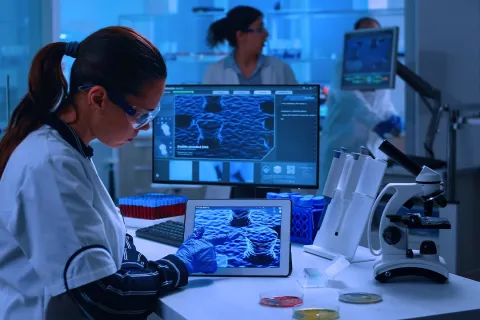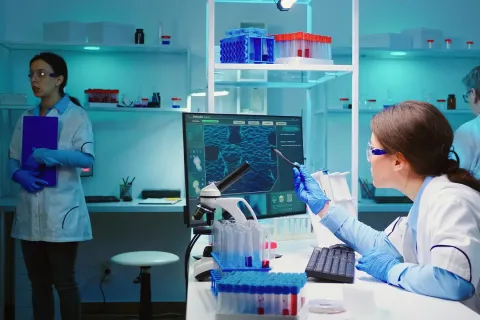
In recent years, the pharmaceutical industry has faced increasing pressure to improve transparency and patient engagement in clinical trials. One key initiative gaining traction globally is the implementation of Plain Language Summaries (PLS). These concise, non-technical documents aim to make clinical trial results more accessible to a broader audience, including patients, caregivers, and the general public. The European Medicines Agency (EMA) has taken the lead by mandating PLS for clinical trials conducted in the European Union through Regulation (EU) No. 536/2014. While the U.S. Food and Drug Administration (FDA) has not yet issued formal regulations on PLS, there are strong indications that such requirements may be forthcoming. The FDA's emphasis on plain language in clinical trial informed consent forms and drug labeling suggests a growing recognition of the importance of clear communication in healthcare. One of the primary challenges in implementing PLS is striking the right balance between simplicity and scientific accuracy. Medical writers, who are often trained to use technical language, must adapt their writing style to create content that is both informative and easily understandable by laypersons. Additionally, ensuring consistency across different PLS documents and maintaining compliance with regulatory guidelines can be complex and time-consuming.
FDA Guidelines on Plain Language Summaries: A Chronological Overview
The U.S. Food and Drug Administration (FDA) has not issued specific regulations mandating plain language summaries for clinical trials. However, the agency has provided guidance and recommendations over the years that emphasize the importance of clear communication in various aspects of clinical research and drug development. Here's a chronological overview of relevant FDA guidelines:
- Plain Writing Act of 2010
While not an FDA-specific guideline, this Act required all federal agencies, including the FDA, to use clear communication that the public can understand and use. This set the foundation for future FDA efforts in promoting plain language. - FDA's "Draft Guidance on Informed Consent" (2014)
This guidance emphasized the importance of using plain language in informed consent documents to ensure participants understand the information presented. - FDA Commissioner Scott Gottlieb's Statement (2018)
Dr. Gottlieb announced a pilot program to evaluate the disclosure of certain information from Clinical Study Reports (CSRs) to improve public access to drug approval information. While not specifically about PLS, this initiative demonstrated the FDA's commitment to increasing transparency. - FDA Draft Guidance on "Key Information and Facilitating Understanding in Informed Consent" (2023)
This draft guidance, though focused on informed consent, provides recommendations that are applicable to PLS:- Presenting key information in a clear and concise manner
- Using plain language approaches, such as combining text and visual information
- Employing alternate formats, like bubble formats, to improve comprehension
- FDA's Ongoing Efforts The FDA continues to promote plain writing through various initiatives:
- Providing training to staff on plain language principles
- Enhancing web pages with plain language resources
- Recognizing employees who excel in using plain language
Key Considerations for Sponsors and Regulatory Partners
- Monitor FDA communications for potential future regulations on PLS.
- Apply plain language principles in all patient-facing documents, including informed consent forms and potential PLS.
- Consider voluntarily providing PLS for clinical trials, aligning with global trends and potential future FDA requirements.
- Utilize FDA resources on plain language when developing patient communications.
- Engage with patient groups to ensure clarity and relevance of communications.
Plain Language Summaries serve multiple purposes beyond regulatory compliance. They demonstrate respect for clinical trial participants by sharing results in an accessible format, potentially increasing willingness to participate in future studies. PLS also help build trust between pharmaceutical companies and the public, addressing the industry's historically low public approval ratings.
To create effective PLS, writers should follow several key principles:
- Use everyday language and avoid medical jargon
- Keep sentences and paragraphs short
- Employ active voice
- Utilize headers and sub-headers for easy navigation
- Include visual elements like infographics when appropriate
- Ensure readability at a 6th to 8th-grade level
It's crucial to test PLS with intended audiences before publication. This process can provide valuable insights into patient preferences and help refine communication strategies for future clinical trials. For pharmaceutical companies and their regulatory partners, several considerations should be kept in mind when developing PLS:
- Establish a cross-functional team to oversee PLS development
- Develop a standardized process for creating and reviewing PLS
- Invest in training for medical writers on plain language principles
- Implement quality control measures to ensure consistency and compliance
- Consider cultural and linguistic differences when translating PLS
- Plan for timely dissemination of PLS through appropriate channels
In conclusion, Plain Language Summaries represent a significant opportunity for the pharmaceutical industry to enhance transparency, build trust, and improve patient engagement. As regulatory requirements evolve, companies that proactively embrace PLS will be better positioned to meet both compliance obligations and stakeholder expectations. By investing in clear, accessible communication, the industry can foster a more informed and engaged patient community, ultimately contributing to better health outcomes and a more positive public perception of clinical research.









